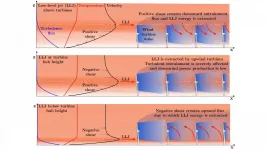Measuring hemoglobin levels with AI microscope, microfluidic chips
A chip-based, microfluidic, AI-powered diagnostic platform could make medical diagnostics more affordable, accessible.
2021-02-23
(Press-News.org) WASHINGTON, February 23, 2021 -- One of the most performed medical diagnostic tests to ascertain the health of patients is a complete blood count, which typically includes an estimate of the hemoglobin concentration. The hemoglobin level in the blood is an important biochemical parameter that can indicate a host of medical conditions including anemia, polycythemia, and pulmonary fibrosis.
In AIP Advances, by AIP Publishing, researchers from SigTuple Technologies and the Indian Institute of Science describe a new AI-powered imaging-based tool to estimate hemoglobin levels. The setup was developed in conjunction with a microfluidic chip and an AI-powered automated microscope that was designed for deriving the total as well as differential counts of blood cells.
Often, medical diagnostics equipment capable of multiparameter assessment, such as hematology analyzers, has dedicated subcompartments with separate optical detection systems. This leads to increased sample volume as well as an increase in cost of the entire equipment.
"In this study, we demonstrate that the applicability of a system originally designed for the purposes of imaging can be extended towards the performance of biochemical tests without any additional modifications to the hardware unit, thereby retraining the cost and laboratory footprint of the original device," said author Srinivasan Kandaswamy.
The hemoglobin testing solution is possible thanks to the design behind the microfluidic chip, a customized biochemical reagent, optimized imaging, and an image analysis procedure specifically tailored to enable the good clinical performance of the medical diagnostic test.
The data obtained from the microfluidic chip in combination with an automated microscope was comparable with the predictions of hematology analyzers (Pearson correlation of 0.99). The validation study showed the method meets regulatory standards, which means doctors and hospitals are likely to accept it.
The automated microscope, which normally uses a combination of red, green, and blue LEDs, used only the green LED during the hemoglobin estimation mode, because the optimized reagent (SDS-HB) complex absorbs light in the green wavelength.
Chip-based, microfluidic, diagnostic platforms are on the verge of revolutionizing the field of health care and colorimetric biochemical assays are widely performed diagnostic tests.
"This paper lays the foundation and will also serve as a guide to future attempts to translate conventional biochemical assays onto a chip, from point of view of both chip design and reagent development," said Kandaswamy.
Besides measuring hemoglobin in the blood, a similar setup with minor modifications could be used to measure protein content, cholesterol, and glycated hemoglobin.
INFORMATION:
The article "Developing microscopy based microfluidic SLS assay for on-chip hemoglobin estimation" is authored by Lokanathan Arcot, Srinivasan Kandaswamy, Anil Modali, Sai Siva Gorthi, and Tathagato Rai Dastidar. The article will appear in AIP Advances on Feb. 23, 2021 (DOI: 10.1063/5.0036446). After that date, it can be accessed at https://aip.scitation.org/doi/10.1063/5.0036446.
ABOUT THE JOURNAL
AIP Advances is an open access journal publishing in all areas of physical sciences--applied, theoretical, and experimental. The inclusive scope of AIP Advances makes it an essential outlet for scientists across the physical sciences. See https://aip.scitation.org/journal/adv.
[Attachments] See images for this press release:

ELSE PRESS RELEASES FROM THIS DATE:
2021-02-23
What The Study Did: A randomized clinical trial, this study reports that a layperson-delivered, empathy-oriented telephone call program reduced loneliness, depression and anxiety compared with the control group and improved the general mental health of participants within four weeks.
Authors: Maninder K. Kahlon, Ph.D., of the University of Texas at Austin, is the corresponding author.
To access the embargoed study: Visit our For The Media website at this link https://media.jamanetwork.com/
(10.1001/jamapsychiatry.2021.0113)
Editor's Note: The article includes conflict of interest and funding/support disclosures. Please see the article for additional information, including other authors, author contributions and ...
2021-02-23
What The Article Says: In this narrative medicine essay, a medical school professor expresses gratitude for the caring and empathy expressed by the team caring for her mother hospitalized with COVID-19 and emphasizes the importance of humanity and compassion over facts and statistics for families physically separated from their critically ill loved ones.
Authors: Lisa M. Meeks, Ph.D., of the University of Michigan Medical School in Ann Arbor, is the author.
To access the embargoed study: Visit our For The Media website at this link https://media.jamanetwork.com/
(doi:10.1001/jama.2021.0119)
Editor's ...
2021-02-23
What The Study Did: Researchers investigated whether children and adolescents who smoked or lived with a smoker had an increased risk of elevated blood pressure.
Authors: Rebecca V. Levy, B.M., B.Ch., M.Sc., of the Montefiore Medical Center in Bronx, New York is the corresponding author.
To access the embargoed study: Visit our For The Media website at this link https://media.jamanetwork.com/
(doi:10.1001/jamanetworkopen.2020.37936)
Editor's Note: The article includes conflicts of interest and funding/support disclosures. Please see the article for additional information, including other authors, author contributions and ...
2021-02-23
WASHINGTON, February 23, 2021 -- COVID-19 can spread from asymptomatic but infected people through small aerosol droplets in their exhaled breath. Most studies of the flow of exhaled air have focused on coughing or sneezing, which can send aerosols flying long distances.
However, speaking while near one another is also risky since the virus can be ejected by merely talking.
In Physics of Fluids, by AIP Publishing, scientists in Japan use smoke and laser light to study the flow of expelled breath near and around two people conversing in various relative postures commonly found in the service industry, such as in hair salons, medical exam rooms, or long-term care facilities. ...
2021-02-23
WASHINGTON, February 23, 2021 -- As one of the leading sources of clean and renewable energy, global wind power capacity has increased more than fivefold over the past decade, leading to larger turbines and pushing wind technology to its limits.
"These much larger turbines are operating in very different atmospheric layers than smaller turbines used 5-10 years ago," said Srinidhi Gadde, one of the authors of a paper in the Journal of Renewable and Sustainable Energy, from AIP Publishing, that examines the impacts of turbine height. "At these scales, local meteorology and extreme shear events, which frequently occur, can impact ...
2021-02-23
The plant that encourages kissing at Christmas is in fact a parasite, and new research reveals mistletoe has an unusual feeding strategy.
Like other plants, mistletoe is capable of using sunlight to create its own food, a process called photosynthesis. However, it prefers to siphon water and nutrients from other trees and shrubs, using "false roots" to invade its hosts.
"Plants are autotrophic, they make their own food. Humans are heterotrophic, we eat it," explained UC Riverside plant-insect ecologist Paul Nabity. "Mistletoe are mostly heterotrophic, but they can switch if they want to."
Nabity's team found when two mistletoes invade the same tree, they increase photosynthesis to get the nutrients they need, essentially sharing the ...
2021-02-23
Kittens could be the model for understanding infectious, sometimes deadly, diarrheal disease in both animals and children, according to new research from North Carolina State University.
Diarrheagenic Escherichia coli (DEC) bacteria cause lethal diarrheal disease in children worldwide, killing up to 120,000 children under the age of five annually. Atypical enteropathic Escherichia coli (aEPEC) are a form of DEC increasingly associated with diarrheal disease in humans and in kittens.
"We were looking for causes of infectious diarrhea in kittens, which has a high mortality rate, and came across this pathogen," says Jody Gookin, FluoroScience Distinguished Professor in Veterinary Scholars Research Education at NC State and corresponding ...
2021-02-23
Building upon previous research, an international team led by scientists at University of California San Diego School of Medicine, has validated a more inclusive and comprehensive genetic tool for predicting age of onset of aggressive prostate cancer, a disease that killed more than 33,000 American men in 2020.
Reporting in the February 23, 2021 online edition of Nature Communications, the researchers describe the performance of a polygenic hazard score (PHS) -- a mathematical estimate of an individuals' age-specific genetic risk for developing a disease -- in a multi-ethnic patient population.
"Genetic tools to predict a man's lifetime risk of prostate cancer might allow us to target cancer screening efforts to the men who are most likely to need it. We are ...
2021-02-23
MINNEAPOLIS/ST.PAUL (02/23/2021) -- University of Minnesota Medical School researchers have developed two new rapid diagnostic tests for COVID-19 - one to detect COVID-19 variants and one to help differentiate with other illnesses that have COVID-19-like symptoms. The findings were recently published in the journal Bioengineering.
Although many people are hopeful about COVID-19 vaccines, widespread vaccine distribution isn't predicted to be available until several months from now. Until that happens, the ability to diagnose COVID-19 quickly and accurately is crucial to help minimize loss of life and ...
2021-02-23
Shipping traffic can be a major source of tiny plastic particles floating in the sea, especially out in the open ocean. In a paper published in the scientific journal Environmental Science & Technology, a team of German environmental geochemists based at the University of Oldenburg's Institute of Chemistry and Biology of the Marine Environment and led by Dr Barbara Scholz-Boettcher for the first time provides an overview of microplastics mass distribution in the North Sea.
The scientists found that most of the plastic particles in water samples taken from the German Bight, an area in the south-eastern corner of the North Sea which encompasses some of the world's busiest shipping lanes, originate from binders used in marine paints. "Our hypothesis is that ships leave ...
LAST 30 PRESS RELEASES:
[Press-News.org] Measuring hemoglobin levels with AI microscope, microfluidic chips
A chip-based, microfluidic, AI-powered diagnostic platform could make medical diagnostics more affordable, accessible.


